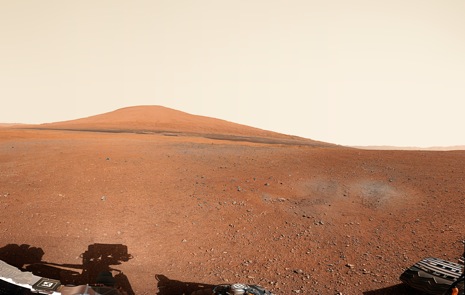THE MARTIAN CHRONICLERS | A New Era in Mars Exploration

The view from inside Gale Crater, the landing place of the rover Curiosity. Eight months after touching down safely, the rover has already found an ancient lake bed laced with carbon, hydrogen, nitrogen, oxygen, phosphorus, and sulfur—the building blocks of life.
John Grotzinger – DEA Recipient 2013 – New York Times Article April 22, 2013
There once were two planets, new to the galaxy and inexperienced in life. Like fraternal twins, they were born at the same time, about four and a half billion years ago, and took roughly the same shape. Both were blistered with volcanoes and etched with watercourses; both circled the same yellow dwarf star—close enough to be warmed by it, but not so close as to be blasted to a cinder. Had an alien astronomer swivelled his telescope toward them in those days, he might have found them equally promising—nurseries in the making. They were large enough to hold their gases close, swaddling themselves in atmosphere; small enough to stay solid, never swelling into gaseous giants. They were “Goldilocks planets,” our own astronomers would say: just right for life.
Click here to view original web page at A New Era in Mars Exploration
